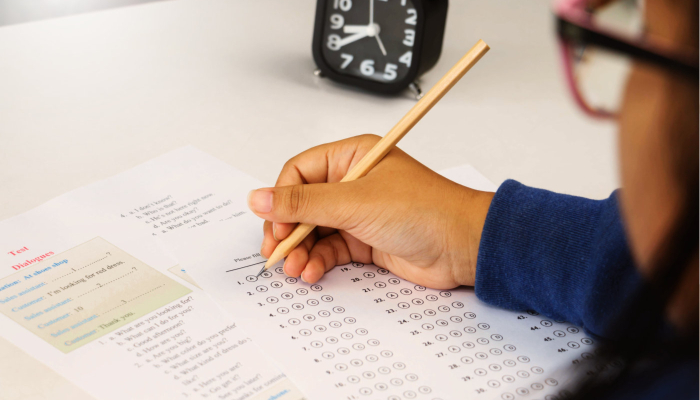Tips for Relieving Test Anxiety
By TMoM Team Member Sydney D. Richardson, Ph.D.
End of grade testing (aka EOGs). I remember first hearing that it was time for my child to engage in the EOGs. Then, I felt my stomach drop and my heart clinch. I knew that it was coming because she was entering the third grade, but I had not fully prepared for it and soon it was time.
How would she handle it? Would she be okay? My husband and I have never stressed grades or “passing” a test because we wanted our children to focus on learning what they were being taught. Also, because they are children, we wanted them to just have fun with learning and exploring. So when we found out that it was time for the EOGs, we got nervous that this one moment would squelch the fun of learning.
Test Anxiety is Real!
Growing up, I was never a great test taker. I always picked the good answer, but not the best answer. Therefore, I had developed some nervousness around testing. Then, I remembered seeing the timer, and oh how I hated timed tests. The timer in the corner made everything worse for me because I always felt that I would run out of time. I knew that I did not want my children to feel anxious the same way that I did during testing season, so I made sure to not display my fears in front of them. Even though I managed to not display my emotions about testing (or so I thought), it did not alleviate them from experiencing anxiety.
Both of my children have some form of anxiety when it comes to test taking and they express it in different ways. One loses sleep a few days leading up the tests. The other one gets irritable about two days before testing begins. Now that my spouse and I understand what this is, and as we reflect on our own experiences growing up, we are better prepared to help our children manage their own anxiety.
Tips for Managing Testing Anxiety
Here are a few tactics to try to help children manage anxiety during testing time:
Practice breathing techniques
This is especially helpful if your child has a difficult time expressing their worry and angst. Start by teaching your child the way to take a deep breath. Allow them to hold it for one second and then let it out as quietly as possible. Doing this a few times can help calm their nerves and regain focus. It also helps them blow the worries out, which they will love.
Remember to remain positive
When children deal with test anxiety, they may find it easy to view everything as negative. For example, a bad testing moment may be viewed as a bad day, overall. While it is important to acknowledge these very real feelings, it is also important to remind children of something positive. In our family, we remind them that 1) tests aren’t everything, 2) trying their best is what is most important, and 3) we love them very much. Sometimes, this is needed because we don’t want them thinking that their performance is tied to our feelings for them or thoughts about them. Remaining positive is key.
Talk it out
What are your child’s fear concerning test taking? What feelings do they have? Allowing children to talk out their feelings and describe what occurs during test taking helps them get things off of their chest (and out of their heads). While you may not be able to solve their issues, you can serve as a listener, which is always helpful.
Set a treat goal
What could be better than a special treat on a complicated day? One thing that we like to do is take the kids out for ice cream following end of grade testing. Since we don’t do this often, they get really excited to have something to look forward to. Is there a treat that your child enjoys, but does not often get? Consider setting a treat goal around testing time. The treat could be a gift, food, or an experience.

Teach the basics of test-taking
Children do not have much experience taking tests; therefore, it is always good to over the basics with them. Keeping things simple helps them remember when you are not around and it can prevent anxiety from creeping in quickly. The basics include the following:
- Remembering to carefully read the directions
- Answering the questions that they know first
- Asking the teacher for clarification
- Staying patient instead of rushing
These are four simple steps that children can remember as they gear up for a test.
Partner with the teacher
Finally, consider partnering with your child’s teacher. It’s important to share what your child may be experiencing so that his or her teacher may provide support during testing. At the same time, you may also learn what your child’s teacher witnesses during testing. Maybe there are tips and tricks that the teacher can share with you to help with anxiety. Or, the teacher may be able to provide some additional encouragement for your child before testing. Establishing that partnership built on open communication is necessary to help any child succeed.
Anxiety is something that more and more people deal with on a daily basis, but there are ways to manage it. For test anxiety in children, remaining cool and calm as a parent and teaching some simple techniques to your children can help them learn to relax a bit, remain patient as they take their time, and stay confident in their own abilities.
Want to see more blogs like this and get notifications on local events and happenings? Subscribe to our free weekly newsletters here.







